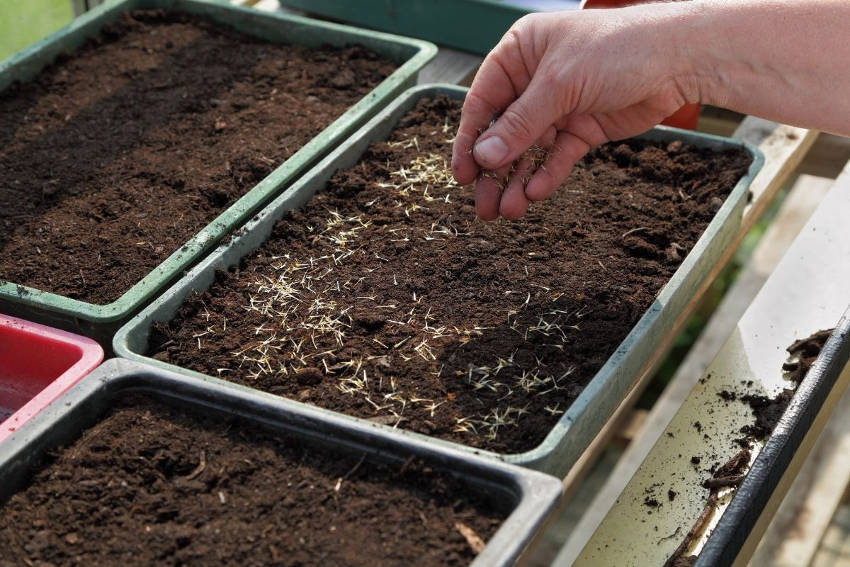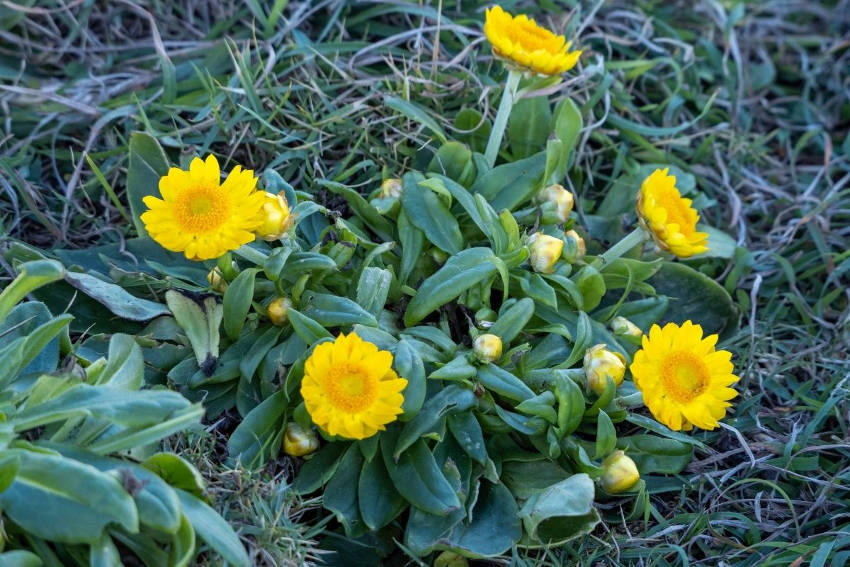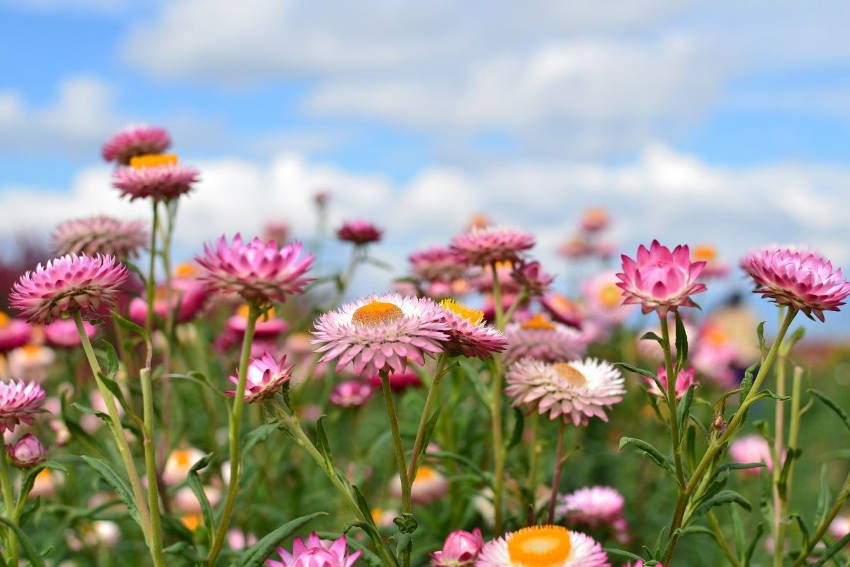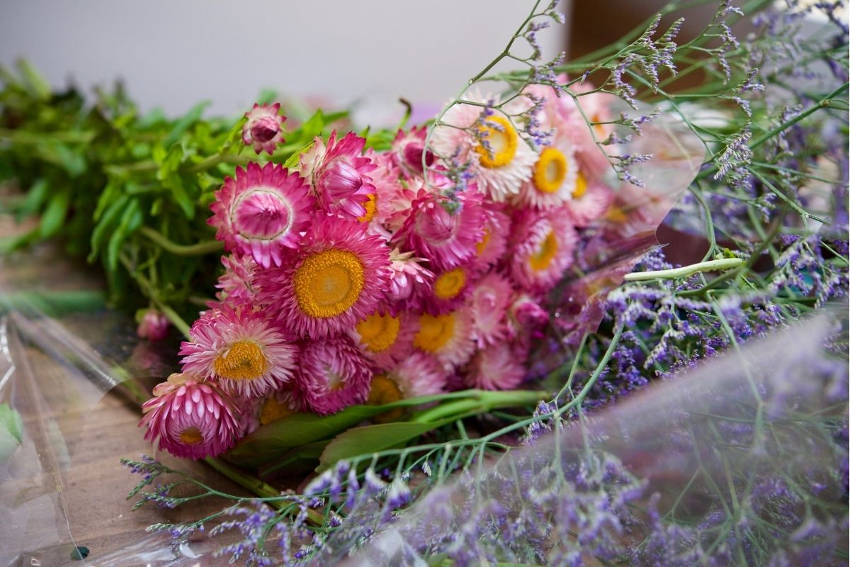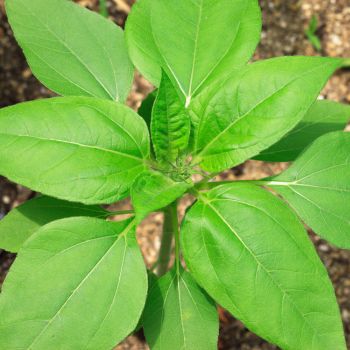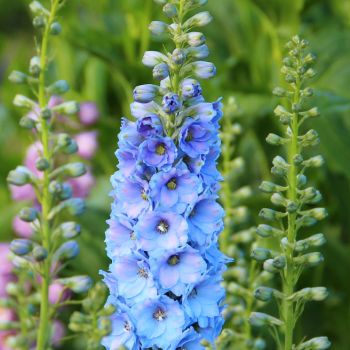Not every flower in the garden needs to be a delicate, highly cultivated annual purposefully bred for formal displays. Everlasting daisies, also known as strawflowers, are native perennial wildflowers that grow quickly and easily to provide bursts of vibrant colour over a long season.
Known botanically as Xerochrysum bracteatum, everlasting daisies are prized for their impressive flowers, with layers of papery bracts in a variety of colours. They’re much used in floristry thanks to their long life in both fresh and dried arrangements. Paper daisies (Rhodanthe species) and showy everlastings (Schoenia filifolia) are separate but similar species with similar growing requirements and uses.
Growing everlasting daisies is easy, as like many natives they're extremely tolerant of both poor soil and drought, and once established they're also happy in heat. What's more, their numerous flowers are just as attractive to butterflies, bees and other beneficial insects as they are to humans, making them a worthwhile addition to any flower bed or informal wild area.
Everlasting Daisies in the Garden
Although they're technically perennials, everlasting daisies earn their name by their extended flowering season rather than by the plants themselves being very long-lived. You can expect a second season of flowering with healthy plants in good conditions, but in most cases they'll need replacing after a couple of years.
Most varieties grow to between 80cm and a metre in height and form compact, rounded shrubs, although dwarf varieties are available that reach around 40cm. The distinctive composite flowers appear from spring right through to autumn in warmer climates, and have a golden centre surrounded by an array of dense petals or rays. They’re available in many colours ranging from golden through orange and pink to a deep burgundy red.
How to Grow Everlasting Daisies
Native seeds can be temperamental germinators, but everlasting daisies are a reliable species that usually germinate without any pre-treatment. However, a period of cold stratification is used by some gardeners to increase germination rates.
They require full sun, and while they are tolerant of a wide range of soil conditions they will produce the most impressive flower show when sown in fertile, well-drained soil with a fine, sandy texture. Depending on your garden's soil type, it's usually best to dig over the beds and rake them to a fine, even tilth. This also will help reduce competition from weeds.
The seeds can be sown from spring through to autumn, with later sowings producing better results in warmer climates. An autumn sowing as the soil cools down will allow the plants to grow slowly over the winter months, and they'll have established a well-developed root system for an early floral display by the time spring arrives.
The ideal soil temperature for sowing is 18-21°C. The seeds require light to germinate. If sowing in a tray for later transplanting, dampen the potting mix and sow on the surface, pressing down gently to ensure full contact with the soil. Lightly cover with a very fine layer of mix only a millimetre deep. Mist the seeds rather than watering with a hose or watering can to make sure seeds aren’t washed off the surface when you water.
The seeds should germinate in between seven and 14 days, with any failures mostly caused by a lack of light or the soil drying out. Once the seedlings have reached around 7cm, transplant them to their final sunny position, spacing them around 50cm apart in each direction.
Alternatively, the daisies can be broadcast over a larger area to mimic their natural distribution and germination in the wild. To sow direct, use half a bucket of potting compost for every square metre of soil and mix in 3 grams of seed per square metre. Water the bed and then scatter the mixture lightly over the surface, where the potting mix will help spread the small seeds more evenly, keep them moist, and prevent them blowing away.
Ongoing Care
Everlasting daisies are highly drought tolerant, but for the best growth keep the soil evenly moist during dryer periods rather than giving irregular soakings. Although the daisies require little in the way of nutrients to grow, feeding can enhance the production of flowers. Use a general purpose liquid fertiliser every three weeks or so, starting from when the plants are 15-20cm in height.
Everlasting daisies can also be lightly pruned at the growing tips to keep them in a compact shape. This is especially useful before flowering in the second and any subsequent years.
Picking and Using the Flowers
Although everlasting daisies are an asset in the garden, they're also an excellent choice for cutting and arranging thanks to their long-lasting qualities when used both fresh and dried. However, timing is important when picking to catch the blooms at their best.
The flowers close up each night and also in wet weather, so cut them on a dry, sunny day shortly after they open in the morning or in the late afternoon before the light starts to fade. Straight after picking, put the stems into a container of water and keep them there until you use them.
If you're using them in a fresh arrangement, a florist's trick is to wire the stem to keep it upright. There are several ways of doing this, but the simplest is to push a length of wire through the stem just below the flower, and then coil it downward to give support.
Drying everlasting daisies makes the most of their papery texture and produces dried flowers with excellent keeping qualities. To dry, remove the lower leaves from the flower stems before tying into small bunches to hang upside down in a cool, dry, airy place. Once fully dried, they'll keep their looks for two years or even longer.
Common Cultivation Problems with Everlasting Daisies
As a native species, the everlasting daisy is fairly robust and can fend off most pests and other problems without much fuss. However, young and tender seedlings can be targets for slugs and snails, so protect them using your usual methods such as beer traps, organic pellets or nematodes.
Likewise, aphids can be a danger to younger plants, so monitor for infestation and use a spray of horticultural soap or eco-neem at the first sign of trouble.
Lastly, powdery mildew can appear in more humid conditions, particularly on mature plants, and should be treated with an organic fungicide to protect the floral display.
These minor problems aside, everlasting daisies will generally look after themselves, and produce great displays through much of the year with very little attention needed after sowing the seeds.
